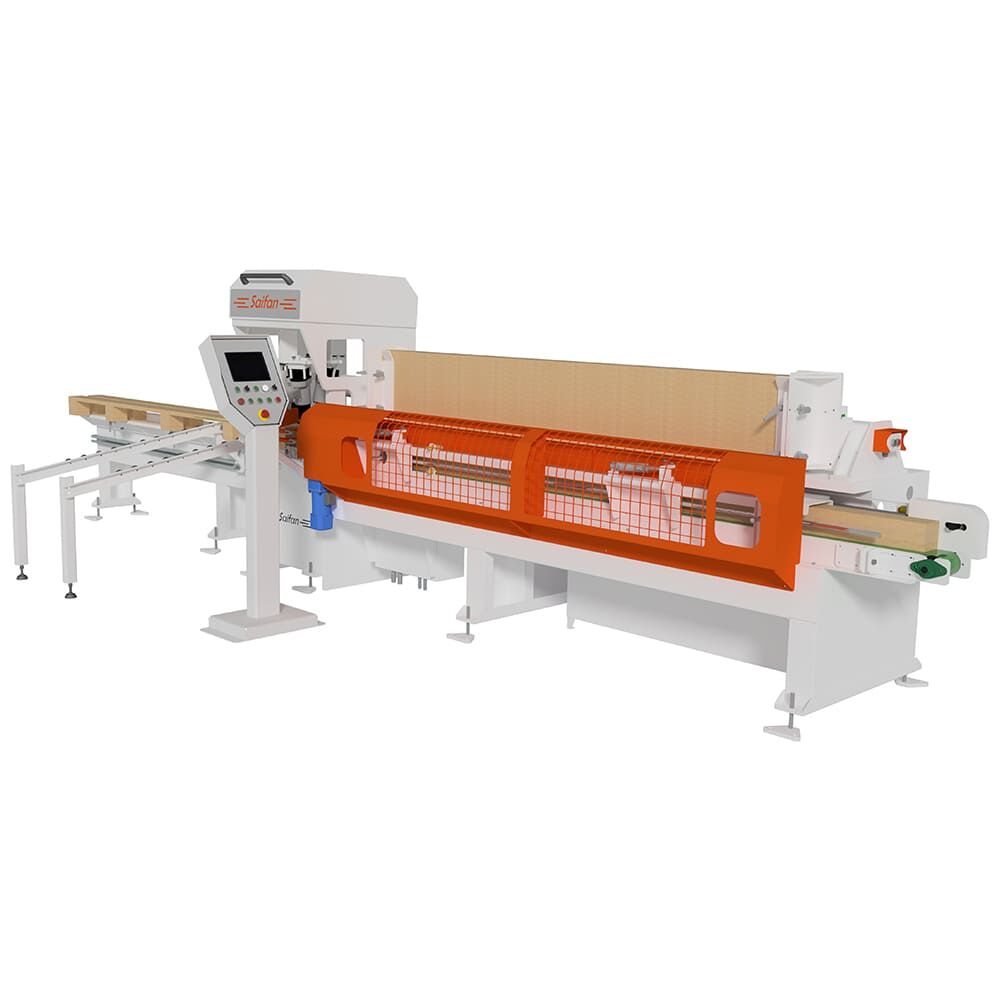Key Components Impacting Nailing Accuracy in Automatic Pallet Machines
1. Nail Gun Mechanisms and Pneumatic Systems
Inside automatic pallet machines, the nail gun mechanisms are pretty much what makes accurate nailing possible during assembly. Think of them as industrial strength hammers that drive nails into wood components with pinpoint precision. Most of these guns run on compressed air, which gives operators better control over each shot. Pneumatic systems really make a difference here too. They deliver steady force and speed throughout the process, so every nail goes in just right. This consistency matters because it keeps mistakes low and ensures good quality across all pallets produced. There's actually quite a few different kinds of nail gun setups available today. Single shot models work great for smaller jobs where occasional use is needed, while continuous feed systems tend to shine in big manufacturing environments that need constant output. Some factory data indicates that when companies upgrade to newer pneumatic technology, they see error rates drop by around 30%, making their automatic pallet machines far more dependable day after day.
2. PLC Controls and Sensor Technology
Programmable Logic Controllers, or PLCs for short, form the core of automated nailing systems and help boost overall accuracy across manufacturing floors. When these controllers take over the nailing process, they handle all the programming work so workers don't need to manually adjust settings as often, cutting down on those frustrating human mistakes that happen during long shifts. Modern sensor tech works alongside PLCs too, constantly checking where nails land and making adjustments on the fly to stop those annoying misfires that waste materials. Some pretty cool sensor setups now give immediate feedback to the system, something manufacturers find absolutely critical for getting those automatic pallet machines just right. Real world data shows big improvements in quality control after integrating better PLCs and sensors into production lines. A recent case study from a major manufacturer reported around 30% fewer defective pallets once they upgraded their sensor technology. Beyond saving money on wasted materials and rework costs, these integrated systems actually speed things up while maintaining consistent quality standards throughout entire batches.
Calibration Techniques for Precision and Speed Optimization
1. Adjusting Nail Depth and Pneumatic Pressure
Getting the calibration right is really important for making sure automatic pallet machines work properly, especially when it comes to setting nail depth and adjusting air pressure. When nails are set correctly deep enough into the wood, the pallets hold together better, so they don't fall apart before their time and save money on fixing them later. Workers who run these machines need to know how to tweak the settings depending on what kind of wood they're using since different batches can be quite different in thickness. Machines that aren't calibrated properly will make weaker pallets that break down faster, and that means spending more cash on repairs or having to replace whole batches. Most experienced technicians suggest checking everything every month or so to keep things running smoothly. Some shops even go as far as weekly inspections during busy seasons when quality matters most.
2. Touchscreen Interface Settings for Workflow Efficiency
Modern pallet nailing machines come equipped with touchscreen interfaces that let operators tweak machine settings without breaking stride. When workers fine tune these controls, they boost workflow efficiency while cutting down on mistakes that cause costly delays. Most folks spend time adjusting nail patterns and changing speed settings to fit what's needed for each job batch. Some shops even set up custom profiles for different types of pallets they produce regularly. The screen also helps keep tabs on production numbers in real time so adjustments can happen fast when demand shifts mid-shift. Factory floor reports show that crews who take the time to master their touchscreen options typically see around 15% faster throughput rates and fewer rejected units coming off the line, especially during those hectic rush periods when every minute counts.
Maintenance Routines to Sustain Peak Performance
1. Cleaning Schedules for Dust and Debris Reduction
Keeping automatic pallet machines clean regularly extends their lifespan and keeps them running smoothly. When dust builds up on parts over time, it creates extra friction that wears down components faster than normal. That's why setting up some kind of cleaning routine makes good sense for anyone operating these machines. For day-to-day upkeep, workers should wipe down all accessible surfaces every morning before starting work. Then once a week, take a closer look at those nailing guns and blades, making sure they're free from buildup that might affect performance. Every month or so, run through a full maintenance check as well. Machines that get proper attention don't jam as often, which means fewer problems with nails going in crooked or not at all. According to shop floor records, companies that stick to regular cleaning routines save thousands annually on repairs and replacements, proving that spending just a little time on maintenance pays off handsomely in the long run.
2. Replacing Wear Parts: Belts, Blades, and Nozzles
The main wear components in automatic pallet machines include belts, blades, and nozzles, all of which play a big role in how well these systems run. These parts wear down over time and need regular swapping out so everything keeps working smoothly without hiccups. Operators who notice telltale signs like slower cutting speeds or louder noises during operation should replace worn parts right away before bigger problems develop. Keeping spare belts and blades on hand makes sense for most facilities since downtime costs money. From what we see across different plants, standard belts typically last around six months under normal conditions, though blades and nozzles tend to stick around longer unless they're being pushed hard day after day. Smart maintenance planning based on real-world experience rather than just following generic rules helps extend equipment life and keeps production running at peak levels.
Incorporating these maintenance routines will not only sustain peak performance but also enhance productivity, ensuring the automatic pallet machine operates efficiently over time.
3. Reducing Downtime Through Efficient Material Handling
Getting materials moving efficiently around pallet assembly lines helps cut down on machine downtime and keeps production running at full speed. When there's a clear plan for how materials should flow from one station to another, operators run into fewer problems with blockages or mistakes in the process. Most plants find that investing time in training makes all the difference. Hands-on sessions where workers actually handle the equipment, plus computer simulations that let them practice different scenarios, really seem to stick better than just reading manuals. Look at Company X for example they boosted their output by 15% after overhauling their material handling system last year. Conveyor belts and those automated sorters aren't just fancy gadgets either they actually work wonders for cutting down on human error and making sure everything moves along smoothly without unnecessary delays.
4. Error Detection and Correction Protocols
Setting up good ways to spot mistakes during the nailing process really helps keep things running smoothly on the production floor. When workers catch problems early, they can fix them right away instead of letting whole sections grind to a stop. Most shops train their staff how to check for errors visually while also teaching them to watch out for those red flags from the machine alerts. The numbers tell a story too many plants have seen error rates drop significantly once everyone gets proper training on handling these situations. Some companies even use simulation software so operators get comfortable dealing with tricky scenarios before they actually happen in real life. This kind of preparation makes all the difference when unexpected issues pop up during regular operations.


